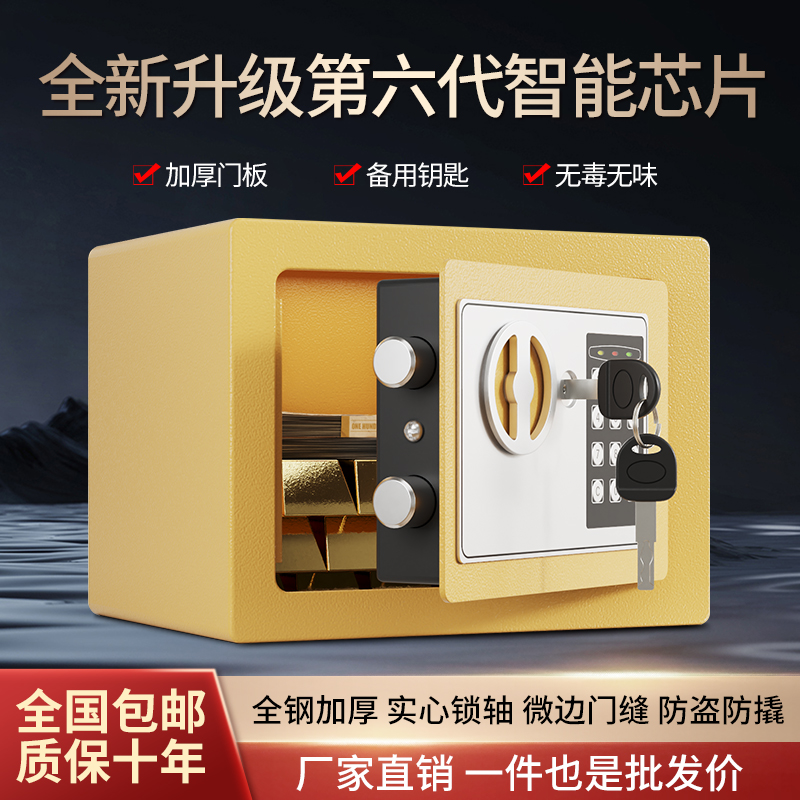高效存储与安全保障——办公保险柜使用指南
甙邵登峰
2024-10-14 23:00:54
0次
**高效存储与安全保障——办公保险柜使用指南**
一、引言
在繁忙的办公环境中,保护重要文件和贵重物品的安全变得尤为重要。办公保险柜作为一种高效存储和安全保障的工具,为我们的办公环境提供了重要的保障。本文将为您提供一份详尽的办公保险柜使用指南,以帮助您更安全、更高效地利用保险柜。
二、保险柜的选择
1. 大小:根据需要存储的物品数量和种类选择合适的保险柜大小。
2. 安全性:考虑保险柜的锁具类型(如电子锁、密码锁等)以及其防撬、防钻等安全性能。
3. 材质:优质的保险柜通常采用钢铁或其他合金制成,具有较强的耐腐蚀和抗压性。
4. 便捷性:考虑到操作的便捷性,有些高级保险柜具备自动报警系统、紧急电源供应等辅助功能。
三、保险柜的使用
1. 安装位置:选择一个隐蔽且不易被破坏的地方放置保险柜,同时要确保其易于使用和操作。 2. 密码设置:为保险柜设置一个复杂且容易记忆的密码,避免使用过于简单或与个人信息相关的密码。 3. 定期维护:定期对保险柜进行维护和检查,确保其正常工作。如遇故障,应及时联系专业人员进行维修。 四、使用注意事项 1. 物品分类:将文件和物品按照重要性和用途进行分类,以便于快速找到所需物品。 2. 定期清理:定期清理保险柜内的物品,确保其整洁有序。 3. 避免超载:不要在保险柜内放置过多物品,以免影响其正常开关和安全性。 4. 紧急情况处理:如遇紧急情况(如火灾等),应立即关闭电源并采取其他安全措施。 五、安全保障措施 1. 密码保密:不要将密码泄露给无关人员,确保只有授权人员能够打开保险柜。 2. 备份保存:对于重要文件和资料,建议进行备份保存,以防止丢失或损坏。 3. 定期更换密码:为保证安全性,建议定期更换保险柜密码。 4. 及时修复损坏:如发现保险柜有损坏或安全隐患,应及时联系专业人员进行修复或更换。 六、英文翻译 Efficient Storage and Security Assurance - Office Safe Usage Guide I. Introduction In a busy office environment, protecting the safety of important documents and valuable items becomes particularly important. As an efficient storage and security tool, the office safe provides important protection for our office environment. This article will provide you with a detailed guide to using the safe to help you use it more safely and efficiently. II. Safe Selection 1. Size: Select the appropriate size of the safe based on the number and type of items to be stored. 2. Safety: Consider the lock type of the safe (such as electronic lock, password lock, etc.), as well as its anti-picking and anti-drilling safety performance. 3. Material: High-quality safes are usually made of steel or other alloys, which have strong corrosion resistance and compressive strength. 4. Convenience: Some advanced safes have auxiliary functions such as automatic alarm system and emergency power supply for easy operation and use. III. Safe Use 1. Installation location: Select a hidden place that is not easy to be destroyed to place the safe, while ensuring its ease of use and operation. 2. Password setting: Set a complex but easy-to-remember password for the safe, and avoid using overly simple or personally related passwords. 3. Regular maintenance: Regularly maintain and inspect the safe to ensure its normal operation. If there is a failure, contact a professional personnel for repair in time. IV. Precautions for use 1. Item classification: Classify documents and items according to their importance and purpose for easy access to the required items. 2. Regular cleaning: Regularly clean the items in the safe to ensure its cleanliness and orderliness. 3. Avoid overloading: Do not place too many items in the safe to avoid affecting its normal opening and closing and safety. 4. Emergency handling: In case of emergency (such as fire), immediately turn off the power and take other safety measures. V. Safety guarantee measures1. Password confidentiality: Do not disclose the password to unauthorized personnel to ensure that only authorized personnel can open the safe.
2. Backup saving: It is recommended to back up important documents and data to prevent loss or damage in case of emergency. 3. Regular password change: To ensure security, it is recommended to regularly change the password of the safe. 4. Timely repair of damage: If damage or hidden dangers are found in the safe, contact a professional personnel相关内容
热门资讯
密码锁、电子锁,哪种类型的办公...
本文讨论了密码锁和电子锁在办公保险柜中的应用,指出每种锁的优缺点及适用场景。密码锁物理安全高,但需防...
密码、指纹、钥匙:解锁保险柜的...
本文介绍了密码、指纹识别和智能钥匙等现代科技解锁保险柜的多种方式,探讨了它们的特点和适用场景。无论选...
高效办公的秘密武器——智能保险...
智能保险柜是现代办公中高效安全的文件存储工具,通过正确选择、设置密码、合理使用特殊功能及维护保养等措...
办公室的守护神:保险柜产品特点...
保险柜产品以高强度材料和先进技术保障安全,广泛用于办公室,可保护财务资产、文件资料和贵重设备。在快速...
密码保险柜使用注意事项及常见问...
密码保险柜使用注意事项包括密码设置、放置位置、操作方式等,并解答了常见问题如忘记密码、无法打开和清洁...
防止数据泄露的利器——办公保险...
本文介绍了办公保险柜在防止数据泄露中的重要性,其采用先进技术、物理保护和权限管理等手段确保数据安全,...
打破传统,迎接智能办公时代——...
随着智能办公时代的到来,保险柜需进行革新升级。智能保险柜采用生物识别、远程控制等技术,提高管理效率和...
保险柜的种类与特点,你了解吗?
保险柜种类多样,包括家用、商用、防爆防砸及移动式等,具有高安全性、多种尺寸和类型、优质材料及便捷操作...
打造安全办公环境,保险柜的选择...
摘要:打造安全办公环境需注重保险柜的选择与配置。应选坚固耐用、具备多锁系统、防火防潮的保险柜,合理配...
办公桌上的守护神——如何选择合...
本文介绍了如何根据实际需求选择合适的保险柜,包括明确需求、了解不同类型、考虑材质和结构、关注品牌和服...



